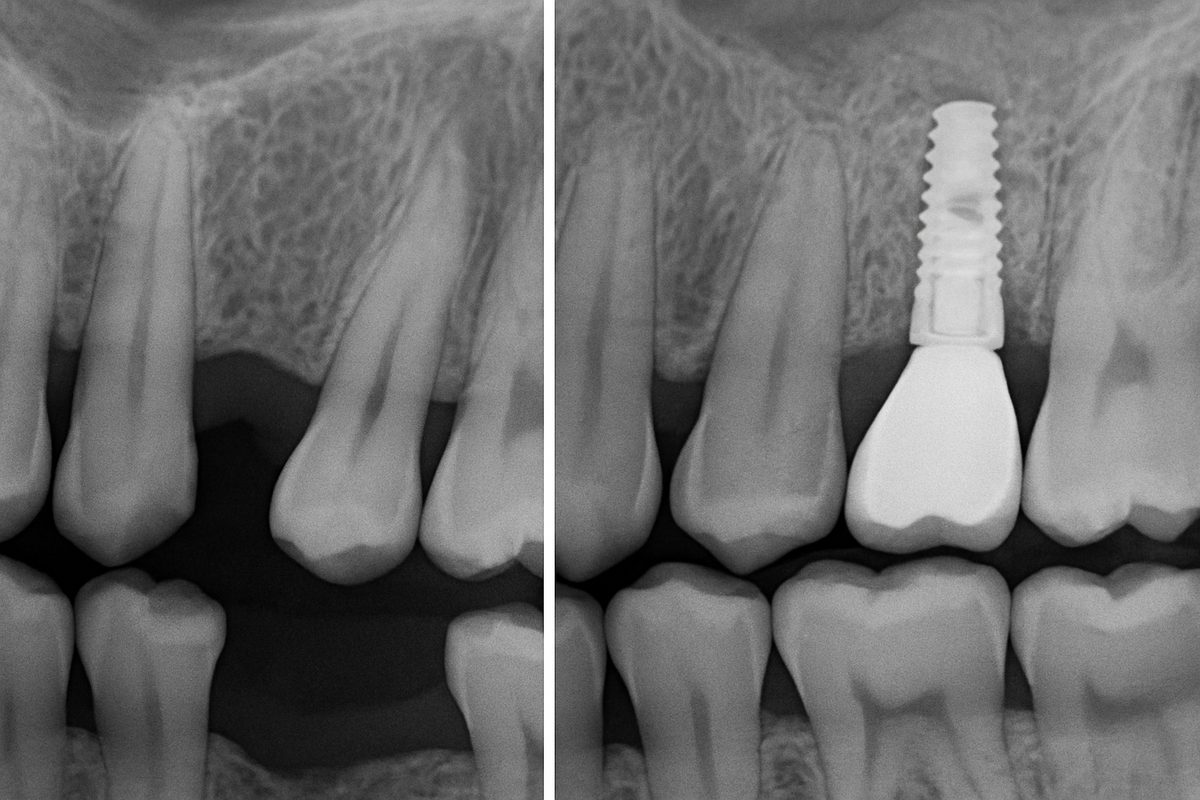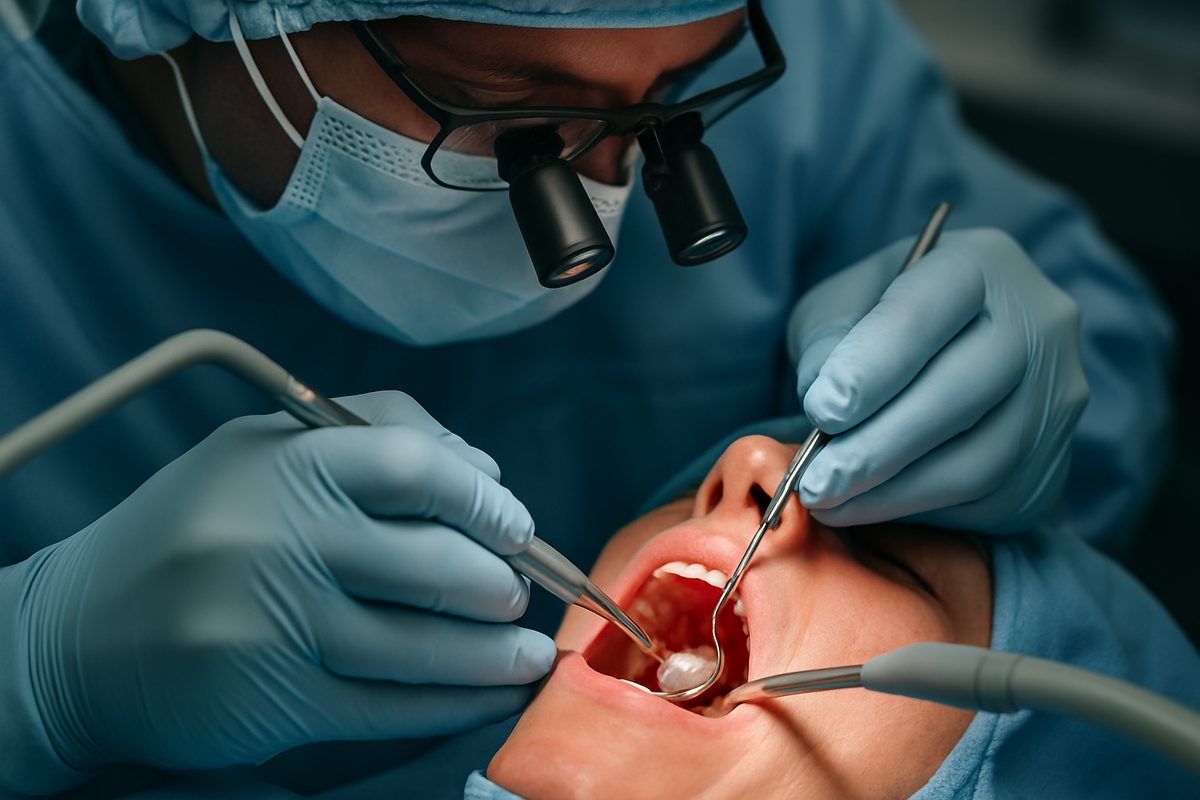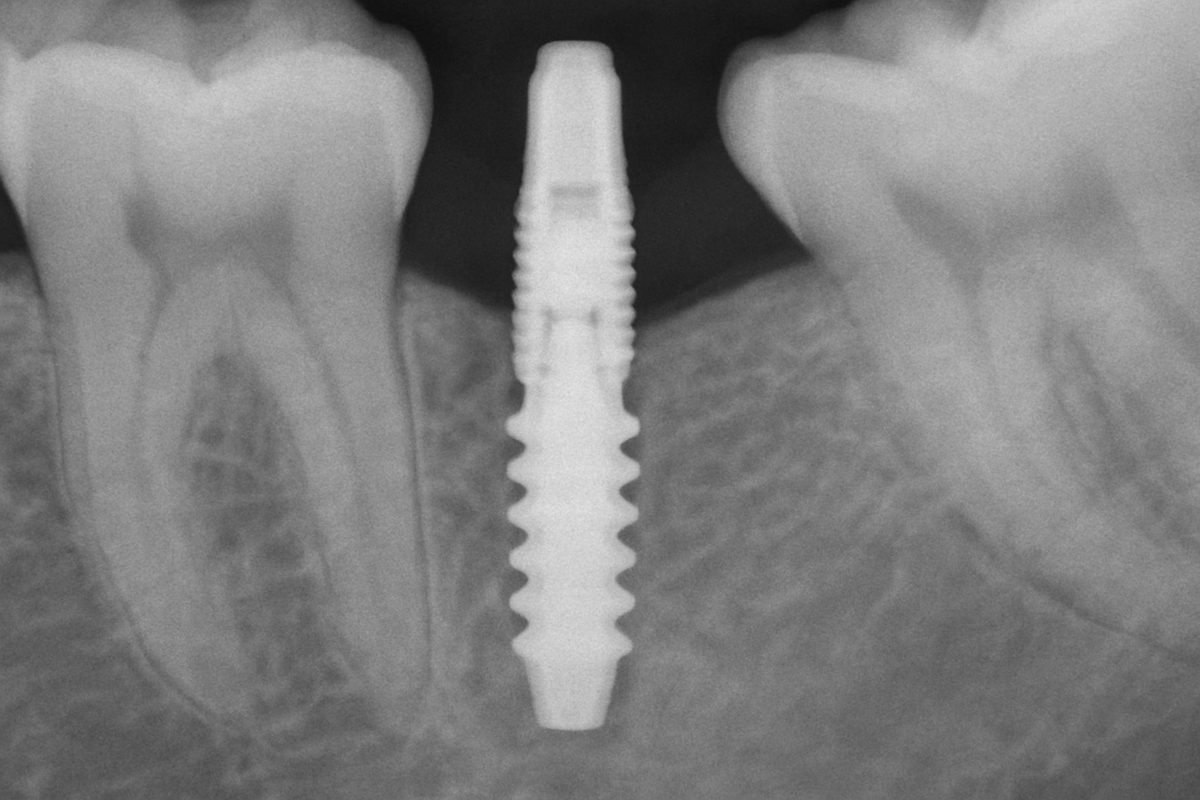Blog - St. Louis, MO
Tips, Facts, And The
Latest In Dentistry

Considering Permanent Replacement Teeth? Here’s What To Know

If you are missing teeth or tired of removable dentures, this post explains permanent replacement teeth and what to expect. You’ll learn the types of implant solutions, who makes a good candidate, the typical treatment steps, benefits and risks, costs, and how modern tech improves outcomes. If you live in St. Louis and are exploring options, this guide will help you prepare for a consult about permanent replacement teeth in St. Louis.
What Are Permanent Replacement Teeth?
Permanent replacement teeth means restorations anchored to dental implants. Types include single implants with crowns, implant-supported bridges, and full-arch restorations like All-on-X. Implants are titanium posts placed into the jawbone; over months they fuse to bone (osseointegration). That fixation makes them more stable than removable dentures, which sit on gums and can shift.
Who Is a Good Candidate for Permanent Replacement Teeth?
General health and lifestyle
Good overall health raises the chance of success. Conditions like uncontrolled diabetes or certain immune problems can affect healing. Smoking lowers implant success, so quitting is strongly advised. Your doctor will review medications, heart and bone health, and lifestyle habits before recommending implants.
Oral health and bone needs
Adequate jawbone and healthy gums are key. If bone has shrunk after tooth loss, bone grafting or a sinus lift may be required before implants can be placed. Periodontal disease needs treatment first. A CBCT scan shows exact bone volume and helps plan whether you need extra procedures.
Typical Treatment Steps and Timeline for Permanent Replacement Teeth
Initial consult and 3D imaging
Expect an exam, digital X-rays or CBCT, and intraoral scans. The provider will review your medical history and discuss goals, then create a treatment plan.
Planning and surgery
Many practices use guided placement and sedation options. Surgery usually places the implant posts; temporary teeth may be provided the same day in some cases.
Healing and final restoration
Osseointegration usually takes 3–6 months. After healing, the final crowns, bridges, or full-arch prostheses are attached and adjusted for fit and bite.
Benefits and Risks of Choosing Permanent Replacement Teeth
Key benefits
Implants restore chewing, improve speech, support facial structure, and help preserve jawbone. They feel and function more like real teeth than removable dentures.
Potential risks and considerations
Risks include infection, nerve or sinus involvement, and implant failure. Additional procedures like grafts add complexity. Long-term success depends on proper planning, surgical skill, and home care.
Costs and Financing Options for Permanent Replacement Teeth
Costs vary widely: a single implant is far less than a full-arch All-on-X solution. Bone grafts, choice of materials, and lab work add to price. Common payment options include dental financing companies, in-house plans, and phased treatment to spread costs. Many dental insurances have limits for implants.
How Modern Technology Improves Outcomes
3D cone beam CT, intraoral scanning, guided surgery, and on-site labs increase accuracy and shorten treatment time. Digital planning helps place implants precisely and design restorations that match your smile and bite.
Choosing a Provider: What to Look For
Experience and credentials
Look for providers with implant case volume, fellowship or board-level credentials, and sedation training. High case volume and advanced training often lead to more predictable results.
Questions to ask at your consult
Ask: “How many similar cases have you done?” “Do you use 3D planning and an on-site lab?” and “What are my sedation options?” Ask about follow-up and long-term maintenance too.
About New You Smile and Dr. James Fetsch (Brief)
New You Smile is St. Louis’ dedicated implant center led by Dr. James Fetsch, who has placed thousands of implants. They use 3D imaging, guided surgery, intraoral scanning, and an on-site lab to plan and place permanent replacement teeth in St. Louis with precision and comfort.
Next Steps If You’re Considering Permanent Replacement Teeth
Gather your medical history, take notes on your goals, and book a consult that includes 3D imaging. Bring your questions and expect a personalized plan and timeline. If you’re ready, schedule a visit to learn whether permanent replacement teeth in St. Louis are right for you.




